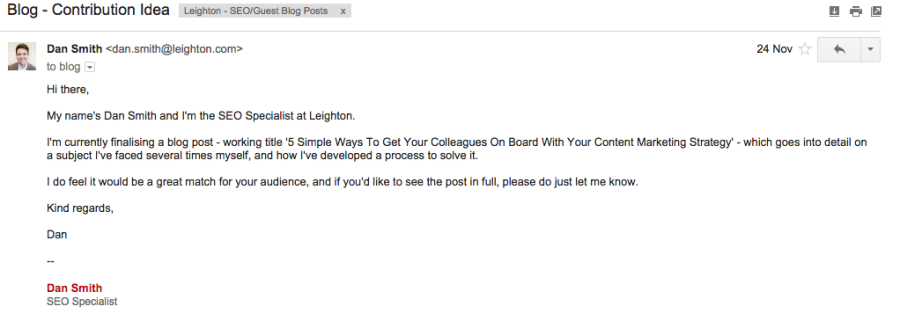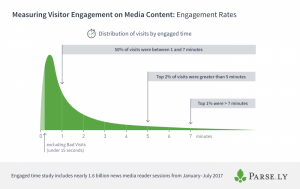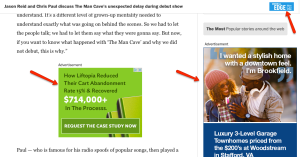
If you’ve read my past posts here on Business2Community.com, I’m sure it’s clear I have a strong focus on content. Able to be incorporated into – and have a positive impact on – any business activity, I’ve focused every SEO strategy I’ve been involved in during my decade in the industry all around content.
I don’t have to go into the reasons why, as we all know ‘content is king’. Even though that’s somewhat of a cliché today, it’s still as true as ever and whether you’re publishing content on your company website, social media platforms or any third party channels, assuming it’s unique, of a high quality and relevant to your audience, I practically guarantee it will have a positive effect on your business.
But although this is the case, that doesn’t mean publishing such content is always easy, something I know rings true when we’re looking at guest blogging in particular.
People are more wary than they ever have been
Due to an almost continuous crack down on poor quality content and irrelevant links, blog owners have become extremely wary of accepting guest authors onto their blogs. Whilst it was once almost a free-for-all, we’re all being extremely conscious about publishing anything that could have a negative effect on our search engine rankings. And rightly so.
The problem with this, however, is that putting a request to a blog owner to publish content on their blog has become something that’s causing people headaches. They’re sending dozens of e-mails every day to highly targeted, relevant blogs, but they’re not seeing any replies, which is not only frustrating in itself, but it can turn out to be a considerable waste of resources.
So what can be done to resolve this?
Whilst the reality is there’s a lot to take into account when you’re reaching out to bloggers for guest blogging opportunities, there’s one mistake I see people making time and time again, and which I’m confident could be the downfall of their efforts:
It’s simple – stop sending lengthy e-mails
Most of us will receive dozens of e-mails every day and many will be dealing with hundreds of daily e-mails. The latter is particularly applicable to owners or editors of popular websites and blogs.
As such, if you’re anything like me, chances are you open an e-mail up and if it’s short, you’ll read it and respond in full there and then. If it’s more than a paragraph or two long, you’ll skim it and make a note to read it fully and respond when you get the opportunity – if that opportunity arrives.
And as soon as you realise this, you begin to understand the importance of keeping your initial pitch e-mails for guest blogging opportunities as short and as sweet as they can possibly be.
To give you an insight into the ideal length of an e-mail (from my experience), here’s an example e-mail I sent that resulted in a blog posting spot on a popular, industry leading blog:
Consisting of just three real sentences, although it is a particularly short e-mail, it covers all three aspects I need covering:
1. Introduction – not knowing the editor’s name, I opted for the informal “Hi there”. Aside from getting around the fact I didn’t have a name to address directly, it laid the foundations for the e-mail style I was looking to achieve – polite yet friendly.
I also gave a very brief overview of who I am, my role and the company I’m working for, so to begin the engagement (it’s tempting to give a little ‘sales talk’ about you / the company here, but it’s generally unnecessary – the editor is interested in the quality of your content more than they are you or your company).
2. Purpose – getting straight to the point after the brief introduction, I detail the fact I’m writing a blog post, what it’s title is (using the phrase ‘working’ to highlight flexibility) and also add a little personality to the post and e-mail by explaining that it’s something I’ve faced myself. As the blog post topic is self-explanatory after reading the title, there’s no need to go into greater detail.
3. Conclusion – I don’t ask for the opportunity to publish content for X, Y or Z reasons. I don’t ask whether the editor accepts guest blog posts (you should ideally know this before you get in touch). I simply take the no pressure approach and explain that I believe the post would be of interest to their audience and if they’d like to see it in full, I’ll send it across.
What’s more, look at the subject line used – ‘Blog – Contribution Idea’. Not only is this also concise and succinct, but it’s devoid of any reference to ‘Guest Blogging’. I haven’t carried out any official tests on this, but I’m certain the term now carries the same connotations as ‘SEO’ does – people are so wary of it, they often instantly think it’s spam, a con or it’s going to be something of a particularly poor quality.
As I mentioned above, there are numerous points that need to be taken into consideration when you’re reaching out for guest blogging opportunities, and if I was to give one piece of advice over any other, it would undoubtedly be the same that applies to all other pieces of content you produce – and that’s that you have to put quality before anything else.
However, when it comes to the e-mails for your guest blogging opportunities, if you’re confident the quality is there in all respects, but you’re still not seeing regular responses, I wouldn’t be surprised if your e-mails are too long – and regardless of the level of quality within them, if they’re so long they’re making the recipient turn off, they’re not going to achieve any of the goals you need them to.
Handy Tip: Use Sidekick
Sidekick for Gmail is a useful tool I was introduced to a few months ago. Integrating with Gmail, it basically allows you to see when an e-mail has been opened. Whilst an e-mail open doesn’t obviously guarantee a reply, the notifications you receive around them can be a great indication that what you’re doing is, or isn’t, working.
Digital & Social Articles on Business 2 Community
(321)







